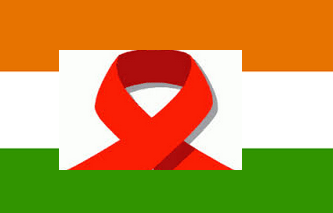NEW DELHI – On May 31, 1987, as panic about AIDS spread, a reporter for the New York Times spent a month investigating the transmission of the global epidemic. “In the kingdom of AIDS,” he wrote, “a penis itself, often likened to a sword in folk tales, again becomes a deadly weapon…As for our friends the gays, they are not so very gay anymore.”
Since the 1980s, much has changed: AIDS is no longer considered a “gay” disease, anti-retrovirals have extended the lifespan of those infected, and the general illogic that accompanied the initial terror of the epidemic has, if not disappeared, at least in many places morphed to include basic facts of the disease. What hasn’t changed is that until now, there hasn’t been a cure. But this spring, researchers at the Pediatric HIV Clinic in Mumbai published a paper in the Indian Journal of Medical Research reporting the first known cases of children in India naturally resistant to AIDS.
For the last ten years, scientists world-wide have been studying “long-term nonprogressors” (LTNPs), people who are HIV-positive but who naturally resist developing symptoms for 6 to 10 years after contracting HIV. A smaller sample of people, known as “elite controllers,” have been known to stay healthy without any treatment for as long as 25 years after infection. While elite controllers are rare – there are only 25 known cases in the world – LTNPs are actually more prevalent than you might think, constituting somewhere between 5 and 15 percent of HIV-positive individuals, says Ira Shah, one of the doctors who wrote the Pediatric HIV paper.
The report studied children from western India, ranging in age from 9 to 13, who had been diagnosed with the virus, and who, without any treatment, maintained healthy CD4 counts, the white blood cells that fight infection. Their bodies naturally produce a type of broadly neutralizing antibodies (BNABs) that are able to keep up with the rapid mutation of HIV within the body. If scientists could artificially replicate these antibodies, an HIV vaccine might suddenly be in sight.
This isn’t necessarily news in the scientific community: More than a dozen types of BNABs have been discovered through various research centers over the last several years. But identifying Indian children who have antibodies is particularly crucial because the most common strain of HIV in Asia is different than that in the West, and identifying local elite controllers here is therefore of particular import.
Using research with LTNPS,the International AIDS Vaccine Initiative (IAVI) has since 2001 been testing vaccine combinations around the world. The vaccine, developed by U.S. bio-tech firm Therion Biolgics in India, takes genetic material from six HIV genes and uses a “viral vector,” or a version of a benign pox virus, that has been genetically manipulated to serve as a transport mechanism. Because only pieces of the virus are used, there’s no way that the vaccine could actually cause infection, but the introduction of the virus is hoped to stimulate the production of specific cells known as cytotoxic T lymphocytes – what the children in the Shah’s study had naturally. Two different versions of these vaccines are currently being tested in Africa, and the Bangkok Vaccine Evaluation Group has a third initial trial in Bangkok with 2,545 intravenous drug users, the results of which have been so promising the trial’s continued to subsequent phases.
But as hopeful as these developments are, testing HIV vaccines raises difficult questions. In India and throughout the developing world, drug trials and medical research are still in a Wild West phase. These trials are being conducted in areas with high incident rates and vulnerable populations. In the coldest possible terms, these experiments depend on healthy people getting exposed to the disease in order to determine the vaccine’s efficacy. The issue of informed consent, considered a basic standard in human-tested research, takes on tricky nuances when working with these marginalized populations, who frequently lack even a basic understanding of the disease. Put simply, there’s a reason the vaccines tests aren’t being conducted in New York. It’s unclear what the vaccine researchers’ obligations are in providing care for people who contract HIV while participating in the trials, or whether these well-funded trials should also include education and prevention components – which, in some ways, would defeat the researchers’ purpose.
Recently a trial was run on HIV-positive people in Mumbai to test a bovine immunodeficiency virus vaccine without getting the patients’ consent, a story which only broke when one of the patients died. While it’s exciting that research in India is progressing, as projects launch into testing phases these issues will need to be addressed. IAVI India Country Director Rajat Goyal is aware of these concerns, explaining that IAVI’s work is not “just about having good labs and good research, but about good participation. We need media coverage, civil society, and political buy-in.” Last year, IAVI opened a $12 million dollar laboratory with federal support to continue their HIV vaccine research, and as they roll out projects, they have a unique opportunity to set standards for this sort of testing.
Unlike the recent case of a child in Mississippi, splashed across U.S. headlines as the first “cured” case of AIDS, IAVI isn’t working with rare, one in a million cases. The goal for HIV vaccines is surprisingly banal – even a 50 percent rate of prevention would be heralded as a success and likely rolled out into the population at large. But in public health, like with the HPV vaccine, even small developments can dramatically reduce the burden of disease. In 2012, 34 million people were HIV-positive, and more then 2.5 million people contracted the disease. If even 50 percent of those could have been prevented, that’s something to – cautiously – celebrate.
